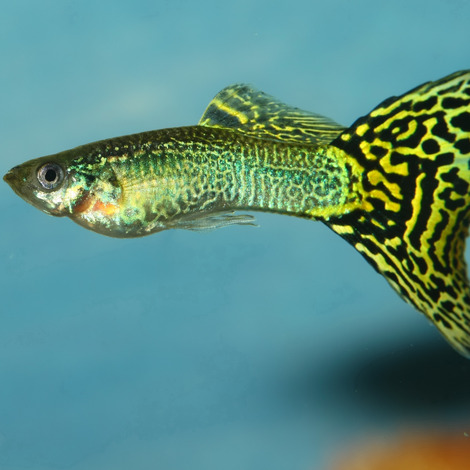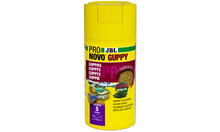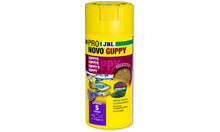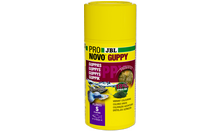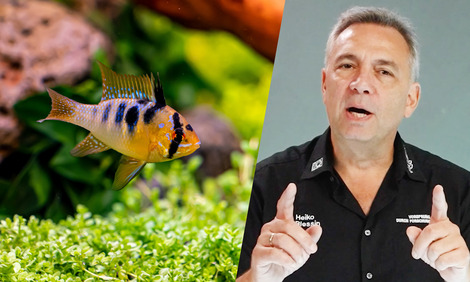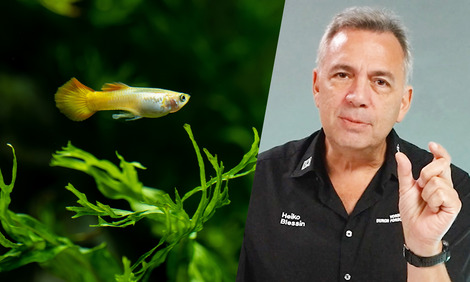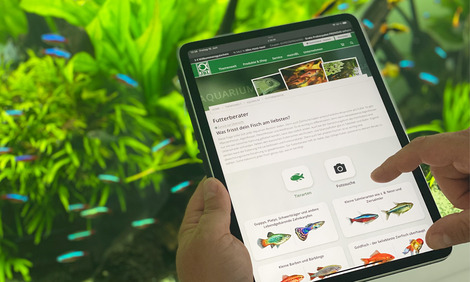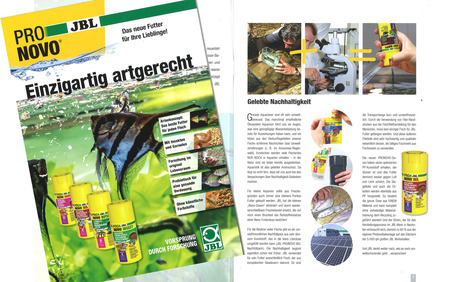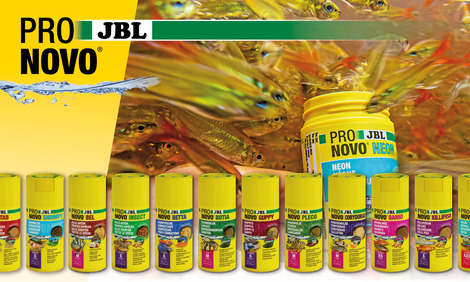Live-bearing tooth carps (Poecilidae): guppies, black mollies, platies, Yucatan mollies, gambusias, green swordtails and some others belong to the group of live-bearing tooth carps. They all have in common that they give birth to live young and do not lay eggs like most other fish species. In the wild, live-bearing tooth carps eat insects, insect larvae, algae and anything else that can be eaten - they are not choosy. Depending on the habitat, the algae with the small animals living in them often form the largest part of their food spectrum.
Flakes or granulate?
To be honest, it’s absolutely a matter of opinion! There are only a few arguments for or against the type of food. If you use an automatic feeder like the JBL AutoFood, you MUST choose granulated food, as almost all automatic feeders are only suitable for granulates. If you’re planning to use an automatic feeder for your next holiday, get your fish used to the granulated food from the automatic feeder IN GOOD TIME. Some fish actually find it a little difficult to switch from granulate to flake or vice versa. Imagine you have always eaten soft cornflakes and now you’re given wholemeal muesli for the first time.
Probiotic or prebiotic?
Probiotic foods, such as some types of yoghurt, contain live bacterial cultures to promote health, but only when consumed in large quantities. Such foods, including probiotic fish food, can easily spoil and then have the opposite effect. The positive effect on health is, by the way, quite controversial. Prebiotics are "substrates that are selectively used by host microorganisms and confer health benefits." Scientists are agreed on this that they promote digestion and thus health. With better digestion, less is excreted and the water is thus less polluted, keeping it cleaner and causing fewer algae problems.
JBL PRONOVO GUPPY GRANO S
Granulated aquarium staple food in size S for guppies & other livebearers from 3-10 cm
- Prebiotic & sinking aquarium fish food: dedicated dietary fibres in the food supply the beneficial intestinal bacteria with food for healthy digestion
- Natural raw ingredients without artificial additives for a natural diet and healthy aquarium fish. Tested on JBL research expeditions in the tropics
- Very high acceptance even with choosy viviparous tooth carp species, thanks to high-quality raw ingredients such as salmon, shrimps and 18 % spirulina
- With very high-quality natural astaxanthin from krill and spirulina, which ensures perfect colour formation in in guppies and other livebearers
- Package contents: original sealed, air- and light-tight, recyclable tin with dosing aid in the lid















